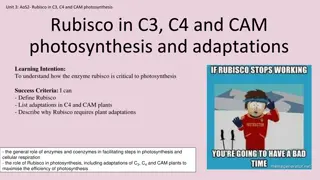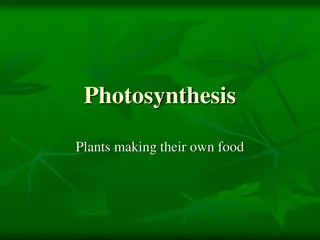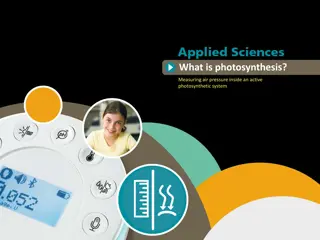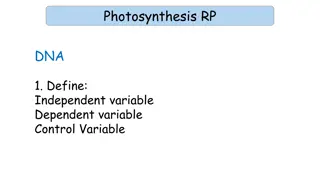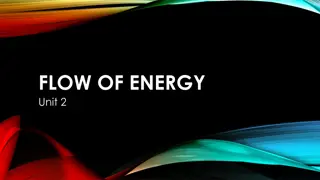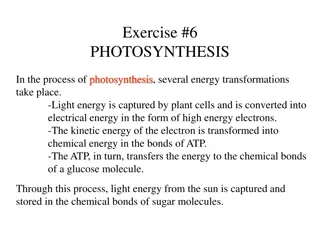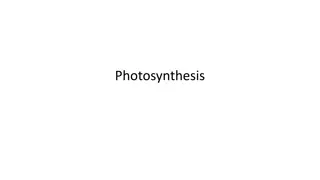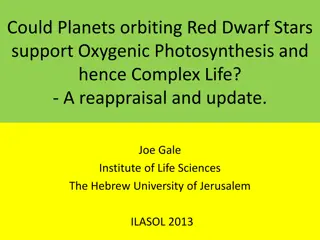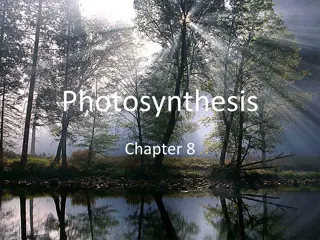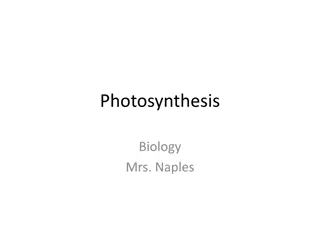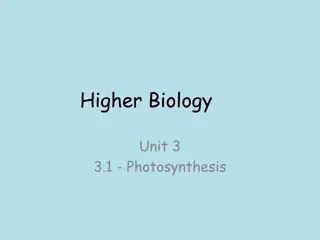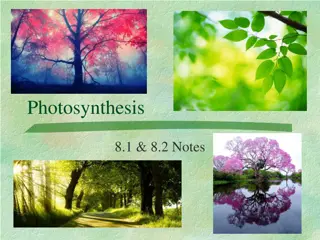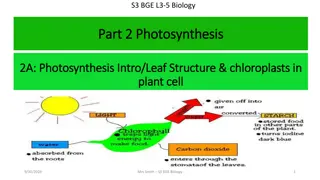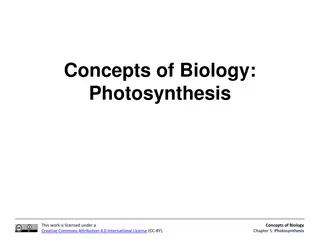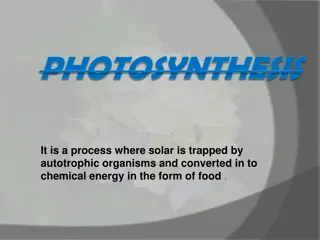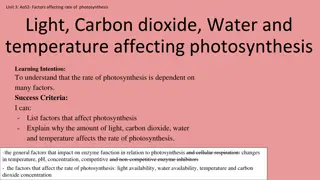Understanding Photosynthesis and Its Processes
Photosynthesis is a crucial process where plants use sunlight to produce energy in the form of ATP and NADPH through light-dependent reactions, leading to the creation of sugars in the light-independent reactions. Factors such as temperature, light, and water play essential roles in regulating photosynthesis, with variations observed in extreme conditions like C4 and CAM plants.
Download Presentation

Please find below an Image/Link to download the presentation.
The content on the website is provided AS IS for your information and personal use only. It may not be sold, licensed, or shared on other websites without obtaining consent from the author. Download presentation by click this link. If you encounter any issues during the download, it is possible that the publisher has removed the file from their server.
E N D
Presentation Transcript
8.3 The Process of Photosynthesis p235
Q: What happens during the light-dependent reactions? A: The light-dependent reactions use energy from sunlight to produce oxygen & convert ADP and NADP+ into energy carriers ATP and NADPH. Photosystems-clusters of chlorophyll & proteins.
Photosystem II Electron Transport Chain-a series of electron carrier proteins that shuttle high-energy electrons during ATP-generating reactions. Photosystem I Hydrogen Ion Movement & ATP Formation
Light-Independent Reactions: Producing Sugar AKA: Calvin Cycle Q: What happens during the light-independent reactions? A: ATP and NADPH from the light-dependent reactions are used to produce high-energy sugars. Carbon Dioxide Enters the Cycle Sugar Production
Factors Affecting Photosynthesis Temperature Light Water
Photosynthesis Under Extreme Conditions C4 Photosynthesis CAM Plants



